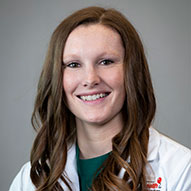Plano
469-303-3000
Fax: 469-303-4520
Frisco
469-303-3000
Fax: 469-303-4520
Prosper
469-303-3000
Fax: 469-303-4520
Request an Appointment with codes: Andrews Institute (Sports Medicine)
469-303-3000
Fax: 469-303-4520
469-303-3000
Fax: 469-303-4520
469-303-3000
Fax: 469-303-4520
Request an Appointment with codes: Andrews Institute (Sports Medicine)
When your child tears the shock absorber (meniscus) in a knee, we can help. We provide the full range of possible treatments, with a focus on providing the most effective but least invasive option possible.
Some tears may only require braces, medication or rehab with our in-house physical therapists. But if surgery is needed, our surgeons offer a minimally invasive arthroscopic approach. They also have expertise treating related knee injuries such as:
Meniscus tears usually occur during sports in which the knee twists or rotates suddenly, like football. But our expert team will provide the needed care and help your child heal.
The meniscus is a thin, soft piece of cartilage that’s shaped like a wedge and located between your thighbone, kneecap and shinbone. Young athletes who participate in contact sports like football are at an increased risk of meniscus tears.
Signs and symptoms of a tear depend on its severity. Minor tears may cause only minimal pain and swelling for a few weeks after the injury. For children with acute pain and discomfort, symptoms may include:
Feeling as if the knee is giving out, “locking” or “catching”
Often, our physicians can diagnose a meniscus tear with a physical exam. They will also order an imaging scan such as an X-ray or MRI to examine the bones, tendons, ligaments and tissues for damage.
Your child’s physical evaluation may include:
Diagnostic testing may include:
At the Andrews Institute, our team of orthopedic specialists designs treatment plans using the least invasive options possible. Whenever possible, our physicians first suggest non-surgical treatment for a torn meniscus.
Non-surgical treatment options include:
If symptoms continue to worsen, we may recommend minimally invasive arthroscopic surgery.
During the procedure, your child’s physician inserts an arthroscope (a thin, lighted tube with a small camera attached) through tiny incisions in the knee, along with special instruments. The physician can visualize, evaluate and treat the problem during the same visit. (Learn more about arthroscopy.)











Most meniscus tears are hard to prevent. However, there are ways you can help your child reduce the risk of a serious tear. For sports, make sure your child does regular strength training to build up leg muscle strength. Learning proper form and technique is also important to preventing injury.
It depends on the severity of the tear. We recommend making an appointment with a pediatric orthopedic physician to assess your child’s injury. If the tear is minor, we advise physical therapy and rehab to strengthen the surrounding muscles. If the tear is serious, we may suggest arthroscopic surgery followed by rehab. Your physician and therapist work together to plan for you child’s return to daily activities such as sports.